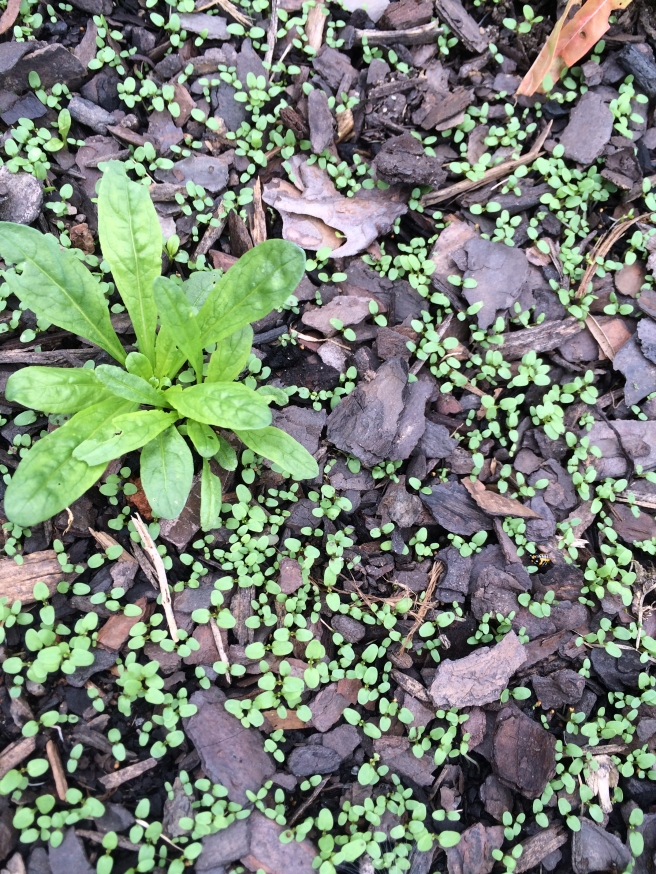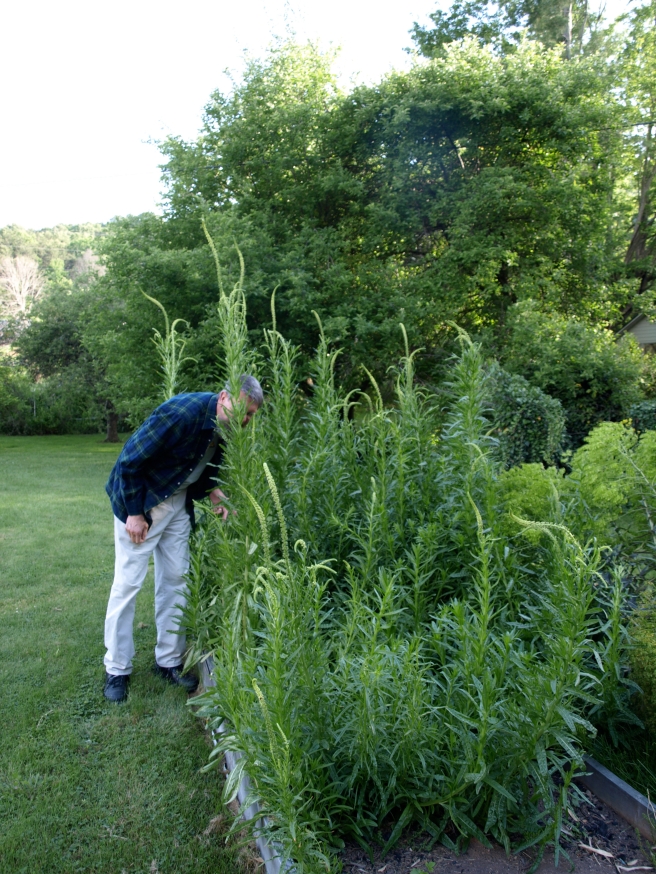I recently presented a program at the NC Arboretum on weld (Reseda luteola). There is a growing interest in natural dyes in our local region and I was hoping to inspire dyers to begin growing their own. A few days before the program, I was asked by a local dyer why I was not talking about native plants such as broom straw or goldenrod, which were both seasonably available at that time. It was a good question. It question deserved some serious thought.
These are the reasons I chose to encourage dyers to use weld:
- It is considered one of the “classical dyes”, that has been used by dyers for centuries. It is the oldest documented source of yellow and was used by both the Greeks and the Romans.
- I have observed that it is more lightfast than any natural yellow dye I’ve used. I have performed lightfast tests and it has outperformed any natural yellow dye I have compared it to.

- When combined with alum mordant it produces a brilliant, clear yellow. When combined with indigo it results in lively, grassy greens. The smallest amount of iron will turn the color to olive green.

Indigo + weld - Weld is native to Eurasia but it grows very easily in our NC mountain climate and region (zone 6). It has weathered both mild and very cold winters. I have grown a crop of weld for the last 5 years. Each year I harvest approximately 5-6 pounds of dry dye material from a 4’x8’ raised bed in the garden. That is plenty for my own work and enough to share with the classes I teach. There are also seeds to share.
- A small amount of weld goes a long way. Dried plant material is used at 50% weight of dry fiber and results in very strong color, with plenty of dye left in the pot for over-dyeing other colors.
- Weld is not fussy about its soil and will grown readily wherever the seeds land, though it is not considered an invasive plant.

Weld seedlings in the gravel outside my studio, where I strip the plants after drying - Weld can be difficult and expensive to obtain. There are not many sources where weld can be purchased, either in extract or plant form. Growing and drying the dyestuff makes sense for the studio dyer.

Dried weld (leave and flowers) stored for later use and the discarded stems, which don’t contain much dye.
All of the attendees at the program left with a small packet of weld seeds. I have already heard from several people that their seeds have sprouted. Weld is a biennial. the plants will establish themselves this fall and then grow to 6’ or more next summer when they go to seed. Then they will be ready to harvest and dry for future use. The seeds will self sow and others can be gathered from the plants







thank you so much for sharing this information ….it certainly has inspired me to experiment more with Weld.
Fabulous write up & great photos, thank you for taking time to write this up! I had irrigation line failure where my weld is/was and lost my crop to Texas sun. I am now defending a smaller stand from deer for next year’s seed.
Your arguments are so compelling, it really makes me want to grow weld 🙂 But I wonder if it will tolerate the climate here in Denmark?
The weld will grow in Denmark. I have friends in the country who grow it with no problems.
Thanks, that’s good to know! I’m including it on my list of things to try 🙂
Reblogged this on Lakeshore Textile's Blog.